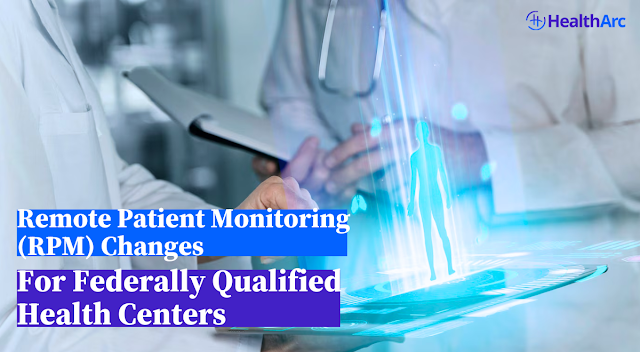How RPM Systems Comply With Cyber Security Standards?
The way healthcare providers approach and offer patient care has significantly improved with the advent of technologically sophisticated remote monitoring equipment and care management platforms, such as Remote Patient Monitoring (RPM). It makes it possible to remotely and in real time monitor patients' health without having to go to the doctor's office.
RPM systems improve patient outcomes and lower healthcare costs over time by tracking vital signs, managing chronic illnesses, and facilitating prompt interventions. But there are serious concerns associated with this convenience, chief among them being the privacy and security of the private health information they gather.
The Importance of Data Encryption in RPM Frameworks
Data encryption is a powerful tool for preventing unauthorized individuals or organizations from accessing sensitive information. Even if patient data is captured during transit, encryption in the context of RPM ensures that it remains completely private.
Data encryption transforms readable information into coded strings that require a unique decryption key to decode. It is difficult for any unauthorized person to access the information because the healthcare professional is the only one with access to the key.
When it comes to RPM systems, there are two main categories of encryption:
End-to-End Encryption (E2EE): This kind of end-to-end data encryption safeguards patient information by guaranteeing that only the healthcare practitioner may decode it once it has been created on the patient's device. This is crucial for safeguarding information sent from the patient's device to the medical system.
Data-at-Rest Encryption (DRE): When data stored in databases or cloud storage is not being used, it is protected by data-at-rest encryption (DRE), which stops unwanted access to the data. Even if a cybercriminal succeeds to access the data storage and anti-intrusion systems, data-at-rest encryption is still able to safeguard and protect patient data.
Data Encryption Must Be Incorporated into RPM Systems
Protection of Patient Privacy: All digital health platforms must adhere to and implement patient privacy as a fundamental and moral concept. When encryption is used for patient data, it ensures that all information is kept private and that only authorized individuals have access.
Regulatory Compliance: The Health Insurance Portability and Accountability Act (HIPAA) and other compliance laws must be followed by healthcare businesses operating in the United States. By preventing data breaches and illegal access, encryption is one way to strengthen compliance efforts.
Trust and Confidence: Patients and healthcare professionals can feel secure knowing that the RPM systems they are implementing are secure if remote care software guarantees data encryption.
Best Practices in Cybersecurity for RPM Systems
Data encryption is crucial for protecting patient information, and it works best when combined with cybersecurity safeguards. For protection against possible threats that could jeopardize the performance and integrity of RPM systems, integrated security systems are necessary. Healthcare businesses should adhere to the following crucial cybersecurity best practices in order to safeguard their RPM systems:
Data Encryption: Encrypting data prevents unauthorized parties from reading it. This is achieved by employing symbolic letters or signs to encrypt a message or figures. This holds true for both in-transit and at-rest data.
Multi Factor Authentication: Using two or more security steps to verify a user's identity is known as multi-factor authentication. Multi-factor authentication gives an RPM system an extra degree of security.
Intrusion Detection Systems: In order to combat malicious phishing efforts and cybersecurity issues on cloud-based healthcare platforms, intrusion detection systems, or IDS, are essential. By keeping an eye on network traffic, spotting suspicious activity, and reacting to possible threats instantly, it solves patient data and privacy security issues and enables healthcare providers to resolve possible security issues before they do harm.
Artificial Intelligence (AI): By identifying suspicious activities in real time and taking swift security action, this system-driven tool may assess patterns that might indicate a cyber attack.
Frequent Software Updates: To gain unauthorized access to systems, cybercriminals usually take advantage of flaws in out-of-date software.
Firewalls and Intrusion Detection Systems (IDS): Incoming and outgoing network traffic is monitored and managed by firewalls and intrusion detection systems (IDS), which stop hostile attempts to gain unauthorized access to an RPM system. Furthermore, by identifying and thwarting threats in real time, these systems add an additional degree of protection.
Conclusion
The adoptability of remote patient monitoring systems is significantly impacted by cybersecurity threats. Healthcare providers must be aware of the necessity of cybersecurity and data encryption in RPM systems in order to improve patient care and satisfaction while also meeting security regulations.
With the help of HealthArc's comprehensive advanced care management platform, healthcare professionals may interact with patients remotely while protecting patient privacy and data. Our RPM software complies with SOC2 and HIPAA regulations.
To see how our digital health platform may assist you in adhering to RPM security requirements while meeting quality standards, book a demo or contact (201) 885 5571.
.png)


%20Changes%20for%20Federally%20Qualified%20Health%20Centers%20(1).png)
Comments
Post a Comment